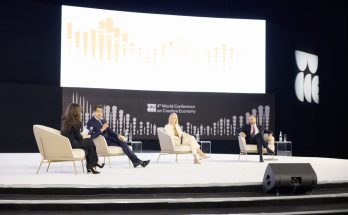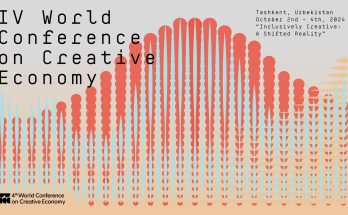 Feeding the fish to attract good fortune. Praying in a Buddhist temple. Twinning Kyoto and Varanasi in smart city bonding. Sharing notes on stem cell research. Blending the ancient and the modern, the spiritual and the scientific, cultural diplomacy has acquired a new resonance with Prime Minister Narendra Modi’s two-day trip to Kyoto, a modern-day pilgrimage that kindles anew possibilities of diplomacy and the two nations coming together in pursuit of national resurgence.
Feeding the fish to attract good fortune. Praying in a Buddhist temple. Twinning Kyoto and Varanasi in smart city bonding. Sharing notes on stem cell research. Blending the ancient and the modern, the spiritual and the scientific, cultural diplomacy has acquired a new resonance with Prime Minister Narendra Modi’s two-day trip to Kyoto, a modern-day pilgrimage that kindles anew possibilities of diplomacy and the two nations coming together in pursuit of national resurgence.
Thinking Smart
Thinking Smart – this is the game of the new diplomacy that’s going to renew old friendships and forge new coalitions to uplift India and help carve a friction-free Asian century in days to come. Looking at pictures of Narendra Modi and Japanese Prime Minister Shinzo Abe, smiling and walking together with Buddhist monks in their midst on the immaculate streets of Kyoto, the former imperial capital of Japan which has morphed into an exemplar smart heritage city, one is not only reassured of bright horizons for the India-Japan relations but also of the possibilities of soft power diplomacy that sometimes work more effectively than hard power in getting the conversation flowing and bringing diverse nations, peoples and cultures together.
In a sense, the Kyoto visit of Prime Minister Modi telescopes in a miniature key strands of the India-Japan relationship that will shape the Asian balance of power in days to come. The signing of a pact between Varanasi and Kyoto for sharing experience and expertise epitomises the urgent need to blend civilizational and spiritual heritage with trappings of modernity. Keeping the city clean and green will not offend Hindu gods  enshrined in Varanasi, the world’s oldest living cosmological city. Cleansing the Ganga will do more to cleanse collective sins of Indians than mere ritual baths. Kyoto and Japan have a lot to teach modern India, and these are the lessons a development-focused no-nonsense prime minister is all too eager to embrace. Mr Modi’s tweets show that the last-minute addition of Kyoto to his Japan itinerary was not just feel-good indulgence, but had a purposefulness to it. “In India we plan to work to develop heritage cities and that’s why I wanted to understand some things (in Kyoto),” tweeted Modi. “The reason I came to Kyoto was primarily cultural. Kyoto has maintained its cultural heritage despite lot of troubles. Kyoto has incorporated modern needs with its cultural heritage. This city was built on the foundation of its cultural heritage. In India, we are also trying to create a heritage city,” Modi stressed. The real challenge for Mr Modi will be deliver on the Kyoto model – Japanese technology and experiences can certainly help, but changing the mindsets of Indians who are blithely indifferent to squalor in their most sacred places will be a more daunting task, and will need more than his inspirational oratory.
enshrined in Varanasi, the world’s oldest living cosmological city. Cleansing the Ganga will do more to cleanse collective sins of Indians than mere ritual baths. Kyoto and Japan have a lot to teach modern India, and these are the lessons a development-focused no-nonsense prime minister is all too eager to embrace. Mr Modi’s tweets show that the last-minute addition of Kyoto to his Japan itinerary was not just feel-good indulgence, but had a purposefulness to it. “In India we plan to work to develop heritage cities and that’s why I wanted to understand some things (in Kyoto),” tweeted Modi. “The reason I came to Kyoto was primarily cultural. Kyoto has maintained its cultural heritage despite lot of troubles. Kyoto has incorporated modern needs with its cultural heritage. This city was built on the foundation of its cultural heritage. In India, we are also trying to create a heritage city,” Modi stressed. The real challenge for Mr Modi will be deliver on the Kyoto model – Japanese technology and experiences can certainly help, but changing the mindsets of Indians who are blithely indifferent to squalor in their most sacred places will be a more daunting task, and will need more than his inspirational oratory.
From sacred to stem cell
 Meeting Shinya Yamanaka, the Nobel laureate and the pioneer of stem cell research, could be seen by some as a side-show of Prime Minister Modi’s Kyoto trip. But this meeting is more instructive, and potentially more rewarding, in the long run. The meeting with the Nobel winner at Kyoto University points to the heart of India-Japan partnership which pivots around knowledge-sharing, technology and innovation. Sickle cell anaemia is not exactly a disease that makes headlines, but inflicts untold suffering on his millions of victims around the world, including India. According to the World Health Organisation (WHO), around 5% of the world’s population are healthy carriers of a gene for sickle-cell disease or thalassaemia. In fact, the percentage of people who are carriers of the gene is as high as 25% in some regions and is quite common in India in tribal regions, especially in the regions where malaria is rampant. This disease causes red blood cells to sickle, resulting in decreased supply of oxygen to the body, which leads to various life-threatening health complications. In his meeting with the pioneering scientist, Modi voiced concerns and urged him to work towards a cure for this painful affliction. What Yamanaka told Modi is perhaps more significant: he said there were currently no Indian researchers at his institute, the Centre for iPS Cell Research and Application, and “he would like Indian scientists to conduct research at the institute.”
Meeting Shinya Yamanaka, the Nobel laureate and the pioneer of stem cell research, could be seen by some as a side-show of Prime Minister Modi’s Kyoto trip. But this meeting is more instructive, and potentially more rewarding, in the long run. The meeting with the Nobel winner at Kyoto University points to the heart of India-Japan partnership which pivots around knowledge-sharing, technology and innovation. Sickle cell anaemia is not exactly a disease that makes headlines, but inflicts untold suffering on his millions of victims around the world, including India. According to the World Health Organisation (WHO), around 5% of the world’s population are healthy carriers of a gene for sickle-cell disease or thalassaemia. In fact, the percentage of people who are carriers of the gene is as high as 25% in some regions and is quite common in India in tribal regions, especially in the regions where malaria is rampant. This disease causes red blood cells to sickle, resulting in decreased supply of oxygen to the body, which leads to various life-threatening health complications. In his meeting with the pioneering scientist, Modi voiced concerns and urged him to work towards a cure for this painful affliction. What Yamanaka told Modi is perhaps more significant: he said there were currently no Indian researchers at his institute, the Centre for iPS Cell Research and Application, and “he would like Indian scientists to conduct research at the institute.”
 Mr Modi has taken up his offer, and just before he left Kyoto for Tokyo, his tweet widened the arc of Kyoto-Varanasi partnership: “Not only Kyoto & Varanasi, Kyoto & Indian universities, industries & research institutes can also work together.”
Mr Modi has taken up his offer, and just before he left Kyoto for Tokyo, his tweet widened the arc of Kyoto-Varanasi partnership: “Not only Kyoto & Varanasi, Kyoto & Indian universities, industries & research institutes can also work together.”
Cultural Diplomacy
Merging the sacred and the scientific, this is a good template to follow as India and Japan launch Phase 3.0 in their multi-layered ties. If soft power is about shaping the outcomes not through coercion or show of economic or military muscle, but by getting the others to want what you want through gentle persuasion, Kyoto has already cast its spell and done its work. In Tokyo, there will be weightier subjects on the table – nuclear deal, investments, maritime security, Chinese assertiveness, the elusive Asian balance of power – but spirited cultural diplomacy in Kyoto has already softened the hearts, rekindled civilizational bonds and set the stage for transformational outcomes that will pitch India-Japan relations into a higher stratosphere.
Author Profile

- Manish Chand is Founder and Editor-in-Chief of India Writes Network (www.indiawrites.org) and India and World, a pioneering magazine focused on international affairs. He is CEO, Centre for Global India Insights, an India-based think tank focused on global affairs.
Latest entries
 In ConversationNovember 26, 2025G20 is a Force for global Good
In ConversationNovember 26, 2025G20 is a Force for global Good articlesNovember 26, 2025Rescuing G20 from North-South divide: Ubuntu Moment
articlesNovember 26, 2025Rescuing G20 from North-South divide: Ubuntu Moment India and the WorldOctober 27, 2025Modi hails the century of India and ASEAN, backs ASEAN centrality
India and the WorldOctober 27, 2025Modi hails the century of India and ASEAN, backs ASEAN centrality India and the WorldOctober 26, 2025Act East: Five reasons why ASEAN summit in Malaysia matters
India and the WorldOctober 26, 2025Act East: Five reasons why ASEAN summit in Malaysia matters







